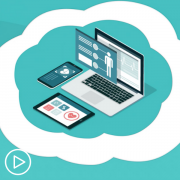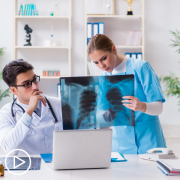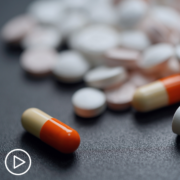What Do You Need to Know About Diffuse Large B-Cell Lymphoma (DLBCL)?
What Do You Need to Know about Diffuse Large B-Cell Lymphoma (DLBCL)? from Patient Empowerment Network on Vimeo.
After a diffuse large B-cell Lymphoma (DLBCL) diagnosis, what’s important for patients and their loved ones to know? This animated video provides an understanding of DLBCL, available treatment options and lists key steps for becoming an empowered patient.
See More From The Pro-Active DLBCL Patient Toolkit
Related Programs:

|
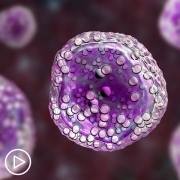
|
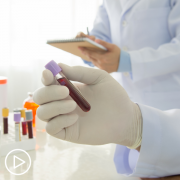
|
Transcript:
Hi, my name is Dr. Williams, and I am a hematologist-oncologist specializing in diffuse large B-cell lymphoma—commonly known as DLBCL.
Today, I’m going to talk about what you need to know if you or a loved one has been diagnosed with DLBCL.
First, it’s important to understand your disease.
DLBCL is the most common form of non-Hodgkin lymphoma, which is a type of cancer that begins in the lymphatic system. The lymphatic system is part of the body’s immune system and includes tissue and organs that create, carry, and store white blood cells. DLBCL is caused when white blood cells called lymphocytes rapidly grow out of control.
It may be localized to the lymph nodes or may occur OUTSIDE of the lymphatic system in areas such as the thyroid, skin, breast, bone, testes, gastrointestinal tract—or even other organs in the body.
In many cases, an early sign of the disease is swollen lymph nodes. Patients may also experience symptoms that can include fever, unintended weight loss, night sweats, and fatigue. These are known as “B” symptoms. Depending on where the lymphoma is in the body, it could cause other symptoms as well.
Next, it’s important to understand how DLBCL is typically treated.
Because it is fast-growing, treatment usually begins quickly to help control the disease and its symptoms. The standard of treatment is a regimen called R-CHOP, which combines chemotherapy and a monoclonal antibody. This approach can lead to disease remission in many patients.
If a patient doesn’t respond to initial chemotherapy treatment or relapses, then several other types of treatment are considered, such as:
- Alternative chemotherapy
- Stem cell transplant
- Targeted treatment
- CAR T-cell therapy
- And clinical trials
When making treatment decisions, factors such as where the disease is in your body, and lab test results can impact available options. And potential side effects, a patient’s age, health, and lifestyle are also taken into consideration.
In addition to understanding your disease and treatment options, it’s vital to be an active partner in your care. So, how can you take steps to be an empowered patient?
- Educate yourself about DLBCL.
- Consider a second opinion or consult with a DLBCL specialist immediately following a diagnosis.
- Write down your questions before and during your appointments. Visit powerfulpatients.org/dlbcl to access office visit planners to help you organize your notes.
- Understand the goals of treatment and ask whether a clinical trial might be right for you.
- Bring a friend or loved one to your appointments to help you recall information and to keep track of important details.
- Finally, remember that you have a voice in your care decisions. Don’t hesitate to ask questions and to share your concerns. You are your own best advocate.

